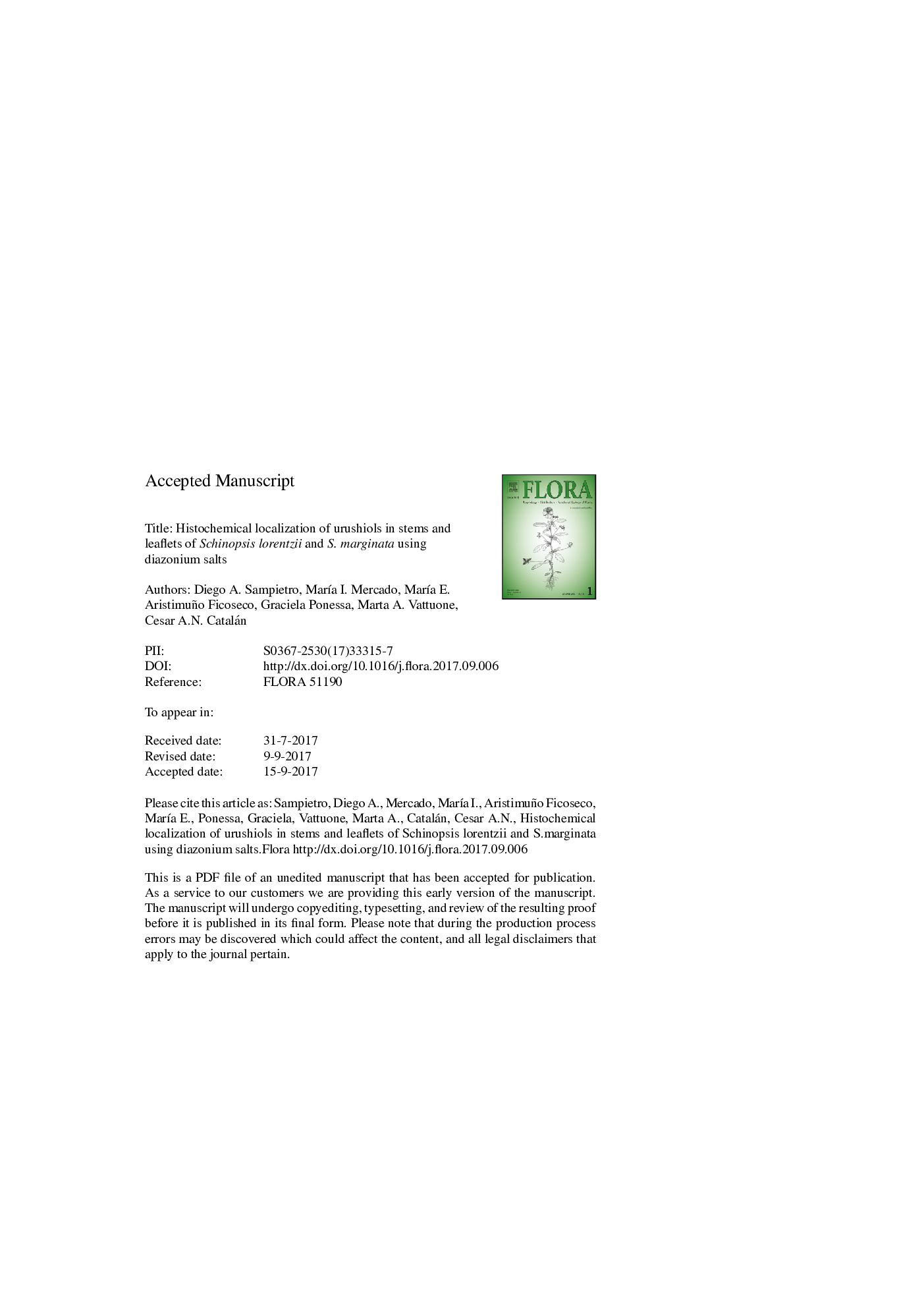| کد مقاله | کد نشریه | سال انتشار | مقاله انگلیسی | نسخه تمام متن |
|---|---|---|---|---|
| 8470247 | 1549923 | 2017 | 23 صفحه PDF | دانلود رایگان |
عنوان انگلیسی مقاله ISI
Histochemical localization of urushiols in stems and leaflets of Schinopsis lorentzii and S. marginata using diazonium salts
دانلود مقاله + سفارش ترجمه
دانلود مقاله ISI انگلیسی
رایگان برای ایرانیان
موضوعات مرتبط
علوم زیستی و بیوفناوری
علوم کشاورزی و بیولوژیک
بوم شناسی، تکامل، رفتار و سامانه شناسی
پیش نمایش صفحه اول مقاله

چکیده انگلیسی
The trees Schinopsis lorentzii and S. marginata produce alk(en)ylcatechols, also known as urushiols, which function in plant defense as antifungals, antifeedants and cause contact dermatitis in human beings. Here, we propose the use of the diazonium salts Fast Blue B ½ZnCl2 and Fast Blue RR ZnCl2 for the in situ histochemical localization of urushiols in stems and leaflets of S. lorentzii and S. marginata. The main surface and internal anatomical features of the aerial plant parts were visualized with cresyl violet and astra blue safranin. Extracts from leaflets and stems were separated by TLC and revealed with aqueous solutions of 0.5% Fast Blue B ½ZnCl2 in 5% acetic acid (FBB), 0.5% Fast Blue RR ZnCl2 in 5% KOH (FBRR) and 5% FeCl3. Fresh cross sections of leaflets and stems were also stained with these chromogenic reagents. Mature leaflets and stems showed few glandular trichomes in their surfaces. Well developed phloem schizogenous ducts were uniformly distributed in the leaflet mesophylls and radially organized in the cross sections of the stems. TLC of the extracts revealed with FBB, FBRR and 5% FeCl3 gave bluish black spots for urushiols. Very few constituents of the extracts other than the urushiols revealed the same colour after spraying with the diazonium salts. FBB and FBRR indicated the presence of urushiols in both the cavity of the phloem schizogenous ducts and their surrounding epithelial cells. Urushiols were not visualized neither in the cuticle of the aerial parts nor in the glandular trichomes. FBB was coupled to more individual polyphenol species than FBRR whereas FeCl3 was by far a less specific chromogenic reagent. Nevertheless, FBRR was more selective towards the urushiols than FBB. The exposure to urushiols should be possible only after the breakdown of leaflets and stems of Schinopsis trees.
ناشر
Database: Elsevier - ScienceDirect (ساینس دایرکت)
Journal: Flora - Volumes 236â237, November 2017, Pages 25-32
Journal: Flora - Volumes 236â237, November 2017, Pages 25-32
نویسندگان
Diego A. Sampietro, MarÃa I. Mercado, MarÃa E. Aristimuño Ficoseco, Graciela Ponessa, Marta A. Vattuone, Cesar A.N. Catalán,